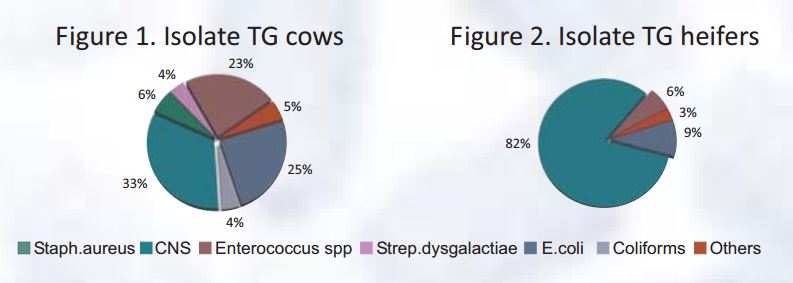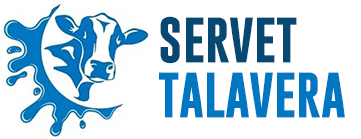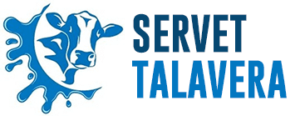Introduction:
Staphylococcus aureus is a major contagious pathogen, it has main reservoir in the udder infected with this germen and the main transmission occurs during milking. It causes subclinical mastitis with increased somatic cell count, moderate clinical mastitis and occasionally severe mastitis (gangrenous mastitis type). On the other hand E.coli is a major pathogen whose main reservoir is the environment of the cow.
The fight against mastitis needs a lot of tools; the vaccination can be a good tool for this purpose.
Material and Methods:
The study is beging conducted on a farm in the center of Spain with 650 milking cows, 3 milking per day, average 35 litres per cow and day, 176 days in milk and 2.3 calvings per cow. The predominant germs causing intramammary infections iare Staphylococcus aureus and E.coli.
The milking system is a parallel parlour with 28×2 points, two milkers. The milking routine consist in a territorial milking, 14 cows per milker, each one does a sequential milking with 7 cows, applies predipping, fore−stripping, drying with paper and attach. The postdippingis clorine dioxide.
The facilities are free stall with cubicles with a mattress with chopped staw, the bed is added two times per week and the cubicles are arranged 2 time per day.
From April 2009 to October 2009 were selected 197 cows and 88 heifers, 109 cows and 43 heifers were vaccinated againstheifers, 109 cows and 43 heifers were vaccinated against 47% 4% 22% Staphylococcus areus and E.col¡ (STARTVAC R ), with inactivated J5 and inactivated strain of Staphylococcus areus SP140 (Slime Associated Antigenic Complex, SAAC). This vaccinated group was called Treatment group (TG). 88 cows and 45 heifers are selected like Control Group (CG). The vaccinated animals received three doses, 45 days before expected calving date, 10 days before expected calving date and 52 days after calving. All animals were sampled to determine Somatic Cell Count before dry−off and first test after calving; milk samples were collected to culture after calving and all clinical mastitis cases postcalving were recorded during study.
The objective is to determine the efficacy of vaccination (STARTVAC) and repercusion on mastitis epidemiology. New infection rate at calving (NIR) and cure rate (CR) were fixed in cows into TG and CG. NIR was considered as cows with <200,000 cellƒml at dry off and >200,000cellƒml at firs test postcalving; CR was considered as cows with >200,000 cellƒml at dry off and <200,000cellƒml at firs test postcalving.NIR was fixed in heifers into TG and CG. IN other hand all positives isolates were determined and compared between groups to know the aetiology of intramammary infections.
Results:
Results of TG and CG in cows are Table 1, the results of heifers are Table 2.

Percentage of positive isolatees in TG of cows was 83% in CG of cows was 95.4%, in TG of heifers was 81.4% and in CG of heifers was 93.4%. Different microorganisms isolates in TG in cows and heifers are showed in Figure 1 and 2.

Different microorganisms in cows and heifers are showed in Figure 3 and 4.

The porcentage of clinical mastitis cases in cows were less in TG than CG (30% vs. 43.2%), clinical mastitis cases in heifers were less in TG than CG (3.4% vs.13.3%).
Conclusions:
New infection rate at calving was less in TG, cure rate was less in CG of cows than TG in heifers, and results were less new infection rate in TG than CG, in consequence more healthy heifers in TG. Less positives isolates were inTG (cows and heifers) than CG (cows and heifers). Less Staphylococcus aureus was isolated in cows in TG (6%) than CG (14.5%) but more isolates of E.col¡ (25%) iin TG than CG (11%). In heifers of TG had not isolated Staphylococcus areus, in CG isolated was 4.7%, isolated of E.col¡ in heifers TG was 8.6% and in CG was 21.4%. Reduction of infection caused by Staphylococcus areus ¡s significant in cows. Reduction of clinical mastitis cases was observed in vaccinated cows and heifers.
STARTVAC R is an excellent tool to reduce intramammary infection in cows and heifers.
Luís MIguel Jimenez, Carlos Romero, Servet Talavera SL,Talavera de la ReIna, Toledo, Spain. FInca La Nava,Almagro,Ciudad Real, Spain



